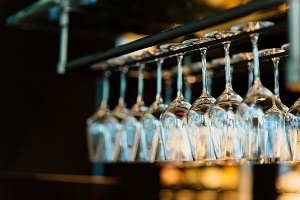9 December 2019
The out of home eating and drinking market has become extremely competitive according to the latest data from CGA’s range of market measurement and research sources. The UKHospitality & CGA Future Shock market update has highlighted ten insights and important market and consumer trends which restaurant/pub/bar operators must keep up with amidst times of uncertainty and market saturation issues. [i]
1 Experience
The experience a venue can offer is becoming increasingly important to consumers. CGA’s BrandTrack consumer survey showed that 72% of customers are driven to a brand for the environment and their perception of the quality of the experience. These experiences can be enhanced through technology or ‘competitive socialising’ concepts, where food and drink are offered alongside activities. Examples of this integration can be found in London bars such as playing table tennis at Bounce or darts at Flight Club.
2 Third space omnichannel
Changing consumer habits have pushed the boundaries of out of home eating and drinking with pop ups and ‘third space’ venues (places that we use to socialise, outside of home and work) evolving to offer more than just food and drink. The CGA Fourth Business Leaders’ Survey found that operators are experimenting with new things; 48% of those surveyed were interested in offering tasting events and 31% were looking at live music to add value. The operator Albion & East is fusing work-life and social in London by its offer of a bakery and hot desking during the day and then transforming into a bar and restaurant in the evening. This is also a savvy use of the premises by the operator to maximise output. Ziferblat, in Manchester and Liverpool, are fusing in a different way; customers pay by the minute to work, meet or socialise with bottomless snacks and coffee to enjoy.
Whilst these options create a new omnichannel approach to sales, it will also bring more challenges for operators, such as providing consistent food and drink in a changing environment.
3 Health
According to CGA’s BrandTrack research, 62% of consumers that eat and drink out proactively try to lead a healthy lifestyle, and 51% of consumers consider sugar to be the most important concern when choosing a meal. These health conscious views, along with the sugar tax launched in April 2018, suggest that brands should cater to those who want more nutritious food choices. However, they should be careful to not lose those who continue to seek treats.
4 Non-alcoholic drinks
Following the health kick mentioned above, and another trend driven by millennials, people are also consuming less alcohol. Two thirds of consumers say they have visited licenced venues over a six month period and not consumed alcohol. Although the craft trend has ensured the beer market remains strong, and sales of spirits is increasing in value due to premiumisation, there has been an 18.7% growth in volume from 2017 to 2018 for non/low alcoholic beverages. Therefore, operators of restaurants, bars and pubs should monitor these views and look to cater to them.
5 Ethics and sustainability
BrandTrack research shows that 44% of British consumers consider the sustainability of ingredients when choosing an out of home meal, and two thirds of consumers find it important for brands they visit to be environmentally ethical. Brands that do prove their sustainability tend to receive support from consumers, millennials in particular, whether it be through cutting out plastic straws from drink sales, or working behind the scenes by reducing water usage or sourcing ingredients from a more sustainable supplier. Some operators are going the extra mile as the ultra-sustainable concept of a zero-waste bar, such as Tap 13 in Tooting, are beginning to appear.
6 Premiumisation
CGA’s research over several years has shown consumer movement towards premiumisation, particularly within the drinking-out sector. The average price of standard gin increased from £2.24 to £2.76 over the past 5 years, whilst lager increased from £2.93 to £3.31 over the same period. As mentioned previously, sales of spirits remain strong due to this premiumisation and the premium sector on- trade is expected to grow by £3bn by 2020, according to the CGA On-Precise Measurement tool. Operators should understand their customers and adapt their drinks offerings accordingly in order to assist growth.
7 Consumers are not all the same
Operators should monitor the type of consumer group they currently cater to or wish to cater to. Consumer habits have evolved so much that members of generations now fall into different sub- groups. CGA has launched new consumer segmentation tools to understand the habits and motivations of different groups that enjoy eating and drinking out. For example, they have identified and named the ‘Trending Tastemakers’ as those who are high spenders and early adopters of new brands and ‘Confident Conformists’ as those who are cautious with their money but loyal to the brands they enjoy. Looking at these consumer sets, operators can apply more focused location planning, marketing and pricing, and adjust food and drink offers for maximum appeal.
8 Think like a local
Consumer habits are also shown to vary from region to region, town to town, and even street to street. Understanding the breakdown of consumers in different areas will further allow operators to serve better. We hope that the Government’s plans to regenerate the “high street” will accelerate the focus on local demand and supply.
9 Technology
As always, technology plays an important role in many ways. It allows consumers to engage with brands and other users; a GO Technology Report from CGA and Zonal show that 64% of consumers now read or write reviews on social platforms. Online feedback is an opportunity for operators to personalise engagement and marketing to individual consumer’s wants and needs. BrandTrack research showed that the most common uses of mobiles in regards to out of home eating and drinking are for browsing menus, accessing special offers and making bookings. Operators should therefore ensure easy to use, attractive websites are available to create a strong impression over competitors. The ‘instagramabillity’ of a venue is important as there is a preference for photographs over text for the general consumer.
10 Deliveries
Finally, CGA looked at deliveries in the hope to determine whether this can be considered an opportunity or a threat for restaurants, pubs and bars. There is no doubt that food delivery has become more popular over the years with an abundance of companies such as Deliveroo, UberEats and Just Eat offering their services. In just a six month period in 2018, CGA Zonal GO Technology Report revealed that 27.3 million British consumers (58% of the adult population) had food delivered. Advances in technologies of GPS tracking, drone delivery and automated voice ordering will only increase popularity of deliveries further. Whether this is an opportunity or a threat for operators depends on whether they can adapt to this trend and cater to consumer wants and needs. Our view is that the best high street eateries will survive and delivery sales will add value rather than being a threat.
With the out of home eating and drinking market so heavily concentrated and such high barriers of entry into the market, already well established companies need to be cautious in not becoming complacent in their development. Instead, they should continue to provide the high level of services which is expected by the consumers and adapt to the ever-changing market by looking at the areas highlighted above.
If you have any queries or would like to discuss this topic further, please contact your local UHY adviser.
For more information on the services we provide to the hospitality sector, read our full service brochure here.


